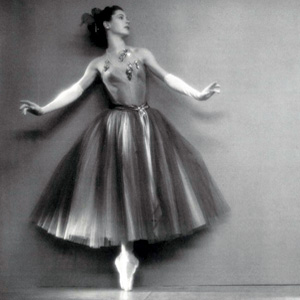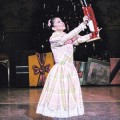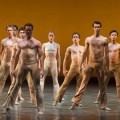Viewers of Black Swan who thought that Vincent Cassel’s character was a trifle exaggerated in his psycho-sexual motivational techniques should consider the track record of the famous choreographer Anthony Tudor. According to Jennifer Homans’ superb new book, Apollo’s Angels: A History of Ballet, Tudor “was known for breaking his dancers emotionally … through humiliation, with cutting personal attacks and sexual remarks that pulled dancers into a spiral of self-hatred”—all as a “deliberate strategy.”
Homans, a professional dancer and history professor, informs Apollo’s Angels with her personal commitment to the discipline of ballet as well as her extensive knowledge of its social and political context over the centuries. Her chronicle begins with the French court dances of the 16th century, courses through various national traditions and ends with the death of Russian-American choreographer George Balanchine.
At the French court, dancing was inextricably tied to royal politics. What began in the 1500s as a way of controlling and sacralizing the unruly life of the body was transformed into a method for physically manifesting the hierarchy of courtiers under the French monarchs in the 1600s. Louis XIII wrote his own ritual dances, casting himself as the Sun and Apollo. These proto-ballets often used “burlesque, erotic and acrobatic elements” to please palace crowds in the thousands, but it was always clear that these were “grand displays of power performed by and for those in power.”
The political purposes of ballet were still in play during the Cold War. The Soviets, as culturally conservative as they were politically radical, dedicated themselves to preserving the classical tradition of 19th-century story ballets at the Bolshoi and Kirov ballets, and then sent dancers on triumphal tours of the West. Of course, once they saw Paris and New York, the Soviet stars (Rudolf Nureyev) didn’t want to stay on the collective farm.
The apotheosis of Homans’ narrative is Balanchine. “Musical and physical precision lay at the core of his art,” and he used them in behalf of ballets that connected with the history of dance, but never just as museum-piece reconstructions. Balanchine’s best works “captured the essence of the French school of ballet (tinged with Imperial Russia), with its formal rigor and decorative flair.” In a downbeat Epilogue, Homans looks at the post-Balanchine landscape and frets that ballet is beginning to “resemble a dying language,” a “sleeping beauty” that may never awake without a rejuvenating kiss from a new genius outside the self-encased tradition. Homans’ graceful prose, deep scholarship and obvious dedication to the endangered tradition, make Apollo’s Angels a major step toward the artistic rebirth she seeks.
Apollo’s Angels: A History of Ballet
By Jennifer Homans
Random House; 643 pages; $35 hardback

 Thirty Seconds to Mars
Thirty Seconds to Mars 


